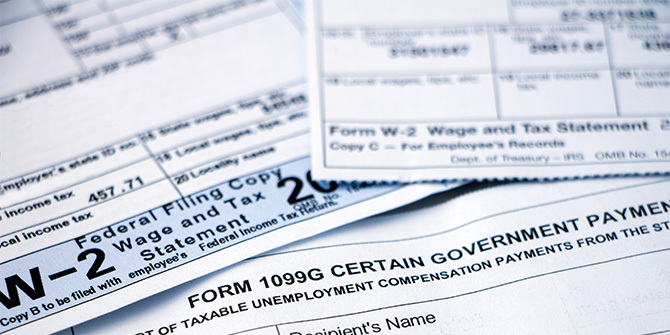
The holidays are in the rearview mirror and spring feels just around the corner. But before summer, you’ll need to make it through tax season. Here are the details about official tax forms and other documents, and where and when you’ll get them.
Tax return forms
Two versions of the standard tax return form can be used for filing — the 1040 and the 1040-SR. The 1040-SR (SR for “senior”) is for those age 65 and older. Everyone else must use the 1040. (The IRS has retired all other 1040 forms.) If you’re filing taxes on your own, there’s an instruction booklet for both forms that includes information on other documents you’ll need to complete, depending on your circumstances. Here are some of the most common documents you’ll need to gather, so that you or a preparer can map out next steps in completing your return:
Income tax forms
By January 31, you should have access to a form for each source of your income during the last calendar year. These should be mailed to you, unless you chose to receive them electronically or online. If you opted for a digital version, be sure to look for an email reminder or text notification that your forms are available.
A W-2 is created for you by any company you (and/or your spouse, if filing a joint return) worked for as an employee during the tax year. There are many different types of 1099 forms for other types of income you (and/or your spouse) may have received during the year.
Consumers typically rely on one or more of about a half-dozen common 1099 forms, all of which should be sent to you by the institution that paid you the income:
- 1099-MISC – Used to report business income paid to a non-employee, rental income, and more. This document is commonly used to report income earned from self-employment.
- 1099-INT – Used to report interest received from financial accounts (e.g., Credit Union Share, Money Market and Checking Accounts) and certain investments.
- 1099-DIV – Used by financial institutions to report dividends and other distributions to taxpayers for non-retirement accounts such as money earned from company stock.
- 1099-B – Used to report capital gains or losses from the sale of investments (e.g., stocks and bonds).
- SSA-1099 – Used to report the amount of Social Security benefits received.
- 1099-G – Used to report certain government income (e.g., unemployment income.)
Overall tax adjustment forms
There are three ways to potentially reduce your tax liability on your return: adjustments, credits and deductions. You’ll also find you’ll need one of three kinds of documents to file for possible tax reductions. Forms include those generated by institutions you have paid for relevant expenses; receipts and other documentation of expenses.
Forms that begin with the number 1098 are issued by institutions to report payments you have made to them which may be eligible for adjustments, credits or deductions. For example:
- 1098-T – Tuition payments to educational institutions
- 1098 – Mortgage interest statement
Some forms of tuition are eligible for tax credits. Mortgage interest payments on a first or second home, qualified medical expenses, child care costs, and many charitable donations, for example, may possibly be itemized and deducted. Just be sure the grand total of all your itemized deductions will exceed the standard deduction the IRS now offers.
For other expenses like child care that may reduce your tax liability, but for which there is no 1098-type form, you are required to collect receipts and other documentation.
The advice provided is for informational purposes only. Contact a tax advisor for additional guidance.